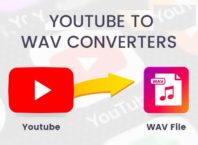iCloud is a great place to store your photos, files, and much more. But how does the iCloud work?
In premise, iCloud is a virtual data storage facility that allows you to access your data anytime from anywhere. It relies on physical data servers that are encrypted, protected, and remote.
In this article, we will cover everything you need to know about how it exactly works, as well as additional services integrated within it.
So if you’re ready to take your technical aptitude to the next level, keep reading.
Contents [show]
What Is iCloud?
iCloud is an integrated service within the realm of Apple. It stores your content securely and keeps all of your applications updated across all of your connected devices.
This means that all of your data, such as notes, files, and photos are available to you at all times. iCloud has 5GB of storage for free, and you can opt-in for more at a low price.
With iCloud, changes on a single device appear on all of them. You can also choose to access your content and data from the web if necessary. Simply sign in with your account and do what you like.
What Is iCloud Backup?
The most basic service of every Apple device is an iCloud backup. When you create an Apple ID, the company will allow you to opt-in for total backups of your device.
When you connect your device to a network connection, it will sync and backup all of the new data to the cloud. If you want, you can choose to do this manually. Simply go to the settings, click on iCloud, and choose a backup.
This backup is restorable at all times and can be synced with a newly-bought device so you retain all access to previous data from your old phone. It’s easy and seamless, and if you delete something on your device but want to return it, you simply reset to factory settings and prompt a restore from the old backup.
What Is iCloud Drive?
The drive is the storage service of iCloud. It allows you to save music, documents, photos, videos, and app data to the cloud. Not only can you store it together, but you can access it from any device, whether it’s a phone or a computer.
You can even create new folders and files from drive enabled apps, and then have them synced across all of your devices. Keep in mind that iCloud Drive is being updated regularly. For instance, with the newest updates, it developed folder sharing.
It’s like dropbox. It allows you to share a folder from your device to other uses a specific number of times with time restrictions, and change the privacy settings at all times.
Phone Storage vs iCloud Storage
When you set up the iCloud, you get 5GB of storage. You can use this to back up all of your data. Depending on the size of the backup, you might need more space.
You can always get more by buying some. The prices are very affordable and equally distributed across all countries.
When you buy an IOS device, it comes with a storage capacity. This number usually ranges from 16GB to 512GB. All of the music you download, the apps you install, the photos you capture, and all of the other content makes use of this storage.
Depending on the capacity and how much is occupied, your device can run out of storage. Although you cannot add more storage like with iCloud, you can always remove files that occupy the space.
However, the beauty of iCloud is that you can unload items from your phone, thus saving space and securing them from being lost. So how does the iCloud work, let’s take a look.
How Does the iCloud Work? Access From Anywhere, Anytime
If an app supports iCloud, all of the data created with it can be accessed with any device that has an internet connection. You simply go to iCloud.com. On the website, you log in with your Apple ID and then acquire access to all of the existing data.
Other documents are accessible via the iCloud Drive and through the search function. The drive does not support the opening of all format types, but it does a reasonable job with the most common formats. You can always download the file on your device, and use specific software that tailors to that type of format type.
Your reminders, notes, calendar, contacts, photos (Learn how to access iCloud photos here), and email is accessible from the iCloud dashboard. This is great for individuals who need to get access to their data, but their phone is lost or dead.
There are some other things you can do to juice out the most out of the iCloud.
iCloud Mastery
First, the number of Apple devices that are connected to the account can get out of hand. This makes it hard to track which devices are signed in after being sold, lost, or passed down. To find out which ones are, sign in to the website and access the settings from the dashboard. Under the storage tab, you will go to Find My Devices. This section will list all of them, as well as the option to negate access.
Second, in the Settings tab, you can restore all of the data and documents from your browser. You can choose to have them synced to your phone or directly to your computer.
Whichever device is paramount to the integrity of your daily life — your Mac, your iPhone, your iPad — iCloud is embedded within the entire Apple ecosystem allowing you to have full control over your data and privacy at all times. Although iCloud has had its issues over the years, iCloud is finally catching up to its bad reputation and becoming the most secure and advanced cloud storage option for all users.
iCloud Galore
Now that you know “how does the iCloud work?”, you are well on your way to fully integrate and make use of its wide set of features.
As long as you remember your passwords, sync your devices regularly, and keep track of your storage capacity, you will never lose access to your precious data.
If you would like to learn more about tech, check out some of our other articles.












